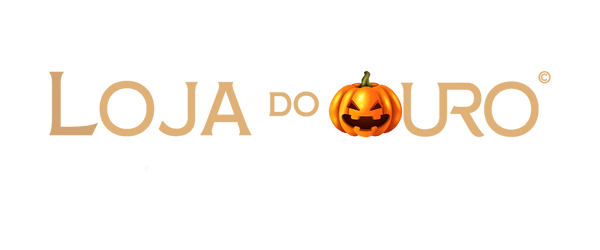How do you know if gold is real?
"All that glitters is not gold," says popular wisdom. Indeed, some things are not quite what they seem. To try to identify what is truly gold and not just a plated or gilded piece , you must consider several factors.
1. Examine your piece, look for marks
To find the carats, you need to check if there is any indication of purity "set" in the piece , which should be between 9k and 24k.
Therefore, the characterization of “real gold” is analyzed through the proportions of gold present in your jewelry. So, according to the types of gold:
- 24K is the gold in your purest form , little used in jewelry
- 22K is composed of 91.6% fine gold . Less common, but also permitted under Portuguese law.
- 19.2K indicates to the consumer that the piece consists of at least 80% gold . This fineness corresponds to what is known as “Portuguese Gold.”
- 18K is a piece that out of 24 parts 18 are gold, therefore it is a piece well composed of metal
- 14K is also common in gold jewelry and means that 14 parts of the jewelry composition are gold
- 9K – Jewelry with this amount of the precious metal is available at more affordable prices . Ideal for those who want a variety of gold pieces for everyday use.
However, due to wear and tear it may not be visible, and even fake jewelry has seals that can look real, so another test will be necessary.
2. Magnet test
As a non-magnetic metal, gold repels the attraction generated by magnets . Therefore, when a magnet is brought close to the piece, if it is strongly attracted to it, then it is not gold. While this test can help rule out some non-metallic metals , the lack of reactions does not always indicate the material's consistency, as some non-magnetic metals are used in counterfeit jewelry. In other words, just because a piece passes the magnet test does not necessarily mean it is gold. Therefore, the analysis must be supplemented with other tests.
3. Density test
Few metals are denser than gold . The density of pure 24K gold is about 19.3 g/ml, the highest value among most other metals . Measuring the density of pieces helps determine if the gold is real. As a general rule, the higher the density, the purer the gold . However, this test is only 100% guaranteed to work with jewelry without gemstones or extra details made of another material.
What are the steps?
- First you weigh the gold piece
- Pour water into a measuring container without filling it completely. Then, write down the measurement (ml) shown on the container.
- Drop the piece into the water and note the new measurement (ml) found.
- To calculate the density of a part, use the following formula: Density = displacement between mass/volume.
- 14K — every 12.9g up to 14.6g must displace 1ml of water;
- 18K (yellow) — 1ml every 15.2g to a maximum of 15.9g;
- 18K (white) — 14.7g to 16.9g should displace 1ml;
- 22K — 17.7 to 17.8g for 1ml displacement.
4. Ceramic test
Using a piece of ceramic tile or an unglazed ceramic plate, rub the piece across its surface . If a black mark forms, it indicates that the piece is not gold , but if the mark is gold , it is pure gold.
Although this test is simple and accessible, it can damage the pieces, so it should not be done at home, but by a professional at Loja do Ouro .
5. Nitric acid test
Nitric acid is one of the most commonly used methods for determining the purity of gold and silver. Real gold doesn't react to nitric acid.
However, due to the difficulties in acquiring the acid and the safety risks inherent in the practice, it's best to leave this test to a professional from Loja do Ouro . This acid is highly corrosive!
To test the piece, simply clean it with a cloth, lightly scrape the surface of the jewelry, and apply a small amount of nitric acid using a dropper. After a few minutes, a color will appear in the area where the drop was spilled:
- If it turns green, it means the gem is just gold plated
- If it turns whitish and milky, it means it is gold plated silver
- If there is no change in color, it probably means that the the jewel is really made of gold
Gold jewelry is a major investment, so it's important to be certain you're dealing with an authentic piece. At Loja do Ouro, we have Official Appraisers, licensed by the Mint , who can appraise your pieces free of charge. Visit us at one of our stores across the country, or contact us to schedule an appointment.

